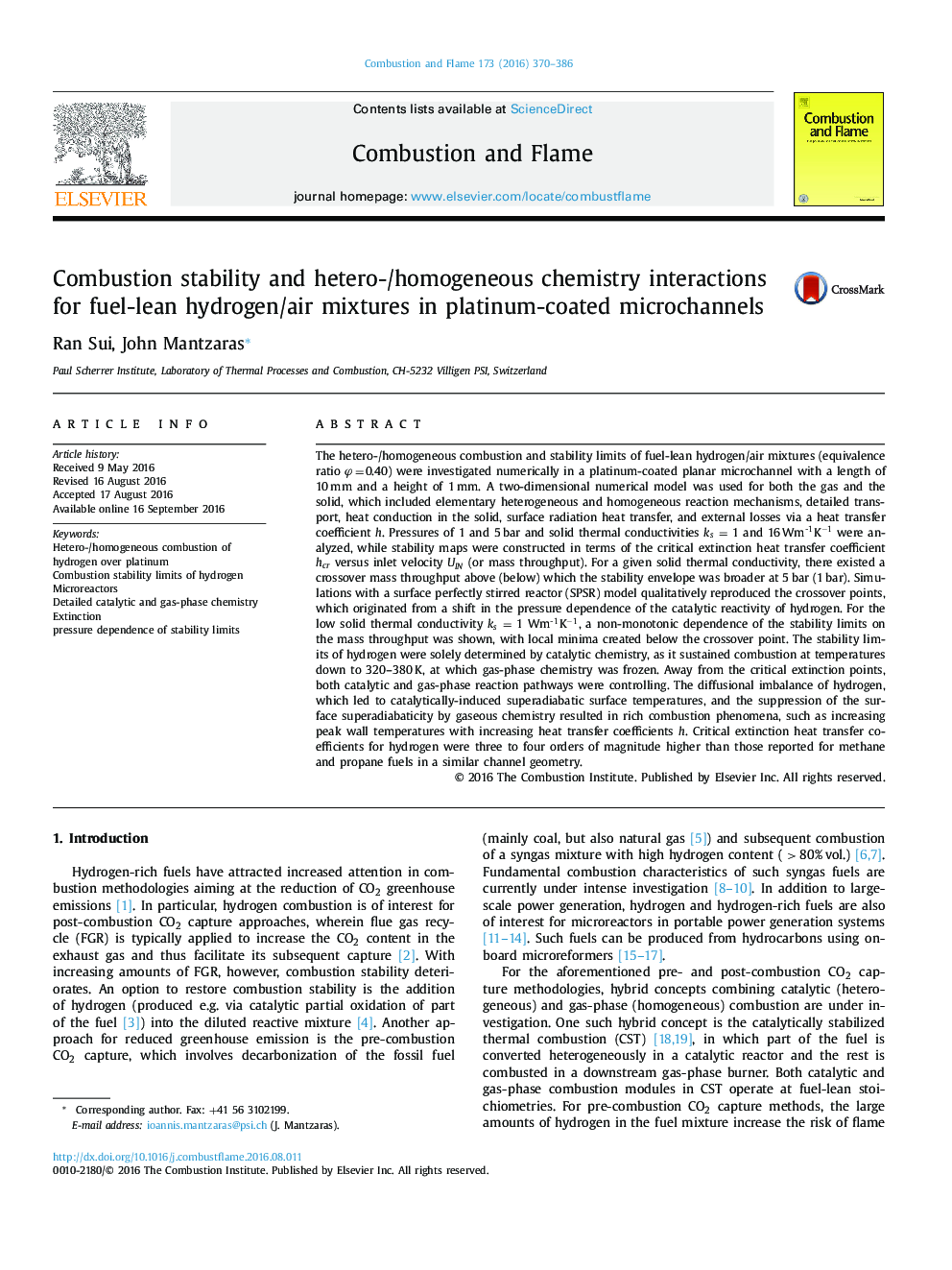| کد مقاله | کد نشریه | سال انتشار | مقاله انگلیسی | نسخه تمام متن |
|---|---|---|---|---|
| 6468385 | 1423564 | 2016 | 17 صفحه PDF | دانلود رایگان |
The hetero-/homogeneous combustion and stability limits of fuel-lean hydrogen/air mixtures (equivalence ratio ÏÂ =Â 0.40) were investigated numerically in a platinum-coated planar microchannel with a length of 10Â mm and a height of 1Â mm. A two-dimensional numerical model was used for both the gas and the solid, which included elementary heterogeneous and homogeneous reaction mechanisms, detailed transport, heat conduction in the solid, surface radiation heat transfer, and external losses via a heat transfer coefficient h. Pressures of 1 and 5Â bar and solid thermal conductivities ks = 1 and 16Â Wm-1Kâ1 were analyzed, while stability maps were constructed in terms of the critical extinction heat transfer coefficient hcr versus inlet velocity UIN (or mass throughput). For a given solid thermal conductivity, there existed a crossover mass throughput above (below) which the stability envelope was broader at 5Â bar (1Â bar). Simulations with a surface perfectly stirred reactor (SPSR) model qualitatively reproduced the crossover points, which originated from a shift in the pressure dependence of the catalytic reactivity of hydrogen. For the low solid thermal conductivity ks = 1 Wm-1Kâ1, a non-monotonic dependence of the stability limits on the mass throughput was shown, with local minima created below the crossover point. The stability limits of hydrogen were solely determined by catalytic chemistry, as it sustained combustion at temperatures down to 320-380Â K, at which gas-phase chemistry was frozen. Away from the critical extinction points, both catalytic and gas-phase reaction pathways were controlling. The diffusional imbalance of hydrogen, which led to catalytically-induced superadiabatic surface temperatures, and the suppression of the surface superadiabaticity by gaseous chemistry resulted in rich combustion phenomena, such as increasing peak wall temperatures with increasing heat transfer coefficients h. Critical extinction heat transfer coefficients for hydrogen were three to four orders of magnitude higher than those reported for methane and propane fuels in a similar channel geometry.
Journal: Combustion and Flame - Volume 173, November 2016, Pages 370-386
